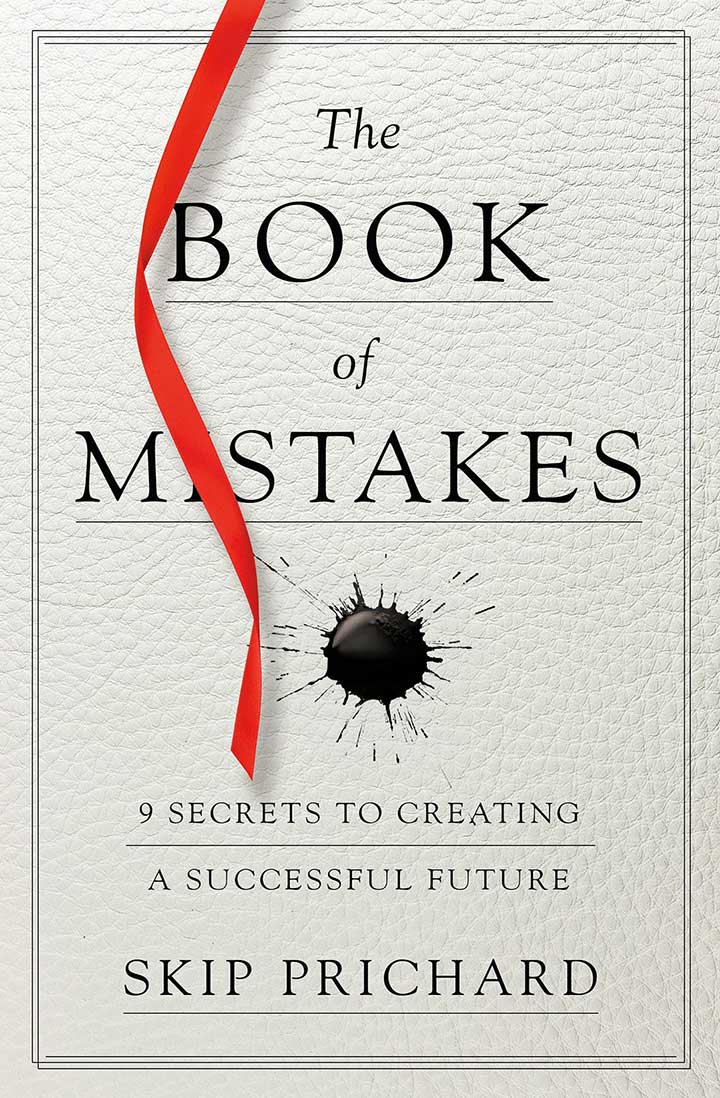Overcoming the Odds
If you enjoy reading stories of victorious underdogs, you will love Competing with Giants by Phyong Uyen Tran is Deputy CEO of THP group, Vietnam’s leading beverage company. The book is a compelling read as it takes you through the journey of a mega-successful family business. Imagine turning down $2.5 billion. What did it take to get there? How did they scale the business? What insights can we learn from Asia’s growth?
More to the point, what can all business leaders learn from her experience?
I found this book an incredibly fascinating read and reached out to learn more.
Turning Down 2.5 Billion Dollars
Take us inside you and your family’s emotions. What was it like to turn down a $2.5 billion offer from Coca-Cola?
When Coca-Cola made the offer, they certainly wanted to dazzle us by sending a private jet to take us to their headquarters in Atlanta. Even though my younger sister, Bich, and I were more or less a decade into running our family enterprise, we were impressed by the effort that they had put forth with the offer. However, Dr. Thanh, who is my father as well as the founder and CEO of Tan Hiep Phat (THP), was calm and collected. As usual, his words were economical, and he listened carefully to all that was said in the meeting. It was extremely difficult to read through his poker face. 2.5 billion dollars was a lot of money, but to my father, the decision had been made when the term of the offer would limit THP from developing any new brands and would limit THP from selling our products outside of Vietnam, Laos and Cambodia. It goes against the vision and mission that we have set for THP. There was no meeting of the minds, and that was that. Almost too simple of a decision.
What lessons should other entrepreneurs learn from your experience?
In my book, I often talk about the core values upon which THP was founded. The financial bottom line is something that entrepreneurs must focus on to keep the business going, but entrepreneurs should also view wealth-building as a journey, not an objective. This means mapping out a clear vision for the company that aligns with its core identity and establishing granular business plans that project into the future – even as far as 10 years out. My family’s company, THP, has a vision to expand throughout Asia and beyond with new and exciting brands. Next, commit to the plans, modifying as needed in response to external changes while resisting the temptation to get diverted by promises of sudden, short-term gains if these do not align with the company’s fundamental goals. This was my family’s mindset when turning down Coca-Cola’s $2.5 billion buyout offer in 2012.
When you have set company values which are essential to long-term viability, rigorously adhere to them. THP is guided by a set of seven core values, including; customer satisfaction, responsibility to the community and society, the spirit of business ownership and believing that nothing is impossible. Say it, live it, and breath it every day in your work.
Focus on results and not on the notion of success set by others. Awards and rankings can be arbitrary sometimes. Personal riches come and go. That’s why results and growth that endure over time must be the primary goal of any entrepreneur. But results are not just about numbers. They encompass a broad range of areas such as the support of strategic partnerships, the strength of relationships with suppliers, the quality and efficiency of production methods, and employee satisfaction. Focus on designing and implementing systems to list, track and monitor all areas of activity, from sales and operations to employee and client relations, and on analyzing the data day-to-day rather than on counting cash. These can be seemingly unexciting work, but disciplines are prerequisite to results. Material wealth may well follow, but the satisfaction of seeing results is far more real.
Serve your customers diligently, even in challenging times. Owning a company means, above all, serving the customers who depend on you to provide reliable, enjoyable brands that are delivered on time. Every interaction with them matters, no matter how small or big. When problems or challenges arise, it is incumbent on you, the business leader, to rise to the occasion and find a way to meet your customer’s needs. Very often, this will mean putting your own needs last. For many people, staying humble and grounded becomes ever more difficult as success grows. They start to believe their own hype, a breeding ground for arrogance and the kind of hubris that leads to mistakes. So keep dreaming big. But as you do, keep your focus and your aspirations in the right place.
Govern Your Growth
Most companies are focused on growth, but you talk about the importance of governing that growth. Tell us a little more about that and your thinking.
One of the most critical mistakes small companies make once they start expanding is to lose sight of their core values. Many probably didn’t even realize they had any core values to begin with. Yet it doesn’t matter whether the company in question begins life as a family-owned business or a start-up. That company will have a founder or founders whose strategy has made it the success it is. Their business ethos will come naturally to them. But the same won’t apply to every new employee who walks through the door.
So as a company becomes larger, it becomes ever more important that its founders make sure their values percolate down through an organization they no longer have complete oversight over. It is even more important than chasing growth. For unless companies develop cohesive corporate cultures, they can come unstuck once they get to a certain size and discover that their employees are pulling in different directions.
First, it is very important to think very carefully about what the company’s core values actually are and then embed them into the organization. Putting up posters is a start. But the real skill lies in making sure those values become part of every new employee’s training and financial compensation. Far too many companies simply reward employees on the basis of hitting sales targets. But what if that employee hit their target by short changing a customer, or creating internal dissension? That attitude won’t help the company over the longer term.
One of the best ways to ensure this doesn’t happen is by graphing an employee’s financial targets on the x-axis and core competency on the y-axis. This means that someone who has hit all their financial targets but has a bad attitude won’t score higher than someone who has a good attitude but hasn’t hit their targets.
Others include putting customer satisfaction first, adhering to the highest possible standards, owning your work by taking responsibility for your successes and failures, having a positive attitude and empowering others, demonstrating integrity, and emphasizing continual learning and innovation. All of these values may seem obvious, but they so often get forgotten once companies start seeing dollars in their eyes, management lines become longer, and silos are created. Successful companies never forget that they are as much behavioral driven as profit driven.
Let East be East, but Learn from West
You say, “Let East be East, but learn from West,” which I found intriguing. Would you share your philosophy with us?
One of the edges that local companies have over multinationals is the incredible insights of the people, culture and values. This means that we can learn and hone much knowledge and technology transfer from the West, but we still embrace our insights.
Here is a case of teamwork to illustrate. Vietnamese people find teamwork particularly difficult because we are such a self-reliant people. History has made it so. Put too much trust and reliance in other people, and you will end up being subjugated by them.
That’s why trying to instill a teamwork culture is something many multinationals struggle with when they attempt to import Western business practices to the region. It is one of the biggest mistakes they make when they come to Asia, and they will almost certainly fail.
But a simple mindset shift can help prevent this. The shift begins with focusing not on the teamwork dynamic, but on the notion of “owning your work,” which resonates more intuitively throughout much of Asia and certainly in Vietnam.
Equally important is emphasizing that helping others achieve success is a form of personal success, too — and can even enhance personal success in various ways.
This tends to resonate best with competitive type-A personalities who may be more self-focused as they strive to climb the corporate ladder. Once they get into management positions, they are often ineffective until they realize they are being judged on their ability to support others. They start making an effort once they understand that making others look good makes them look good, too.
Another aspect of the mindset shift is for leaders to ask themselves, “How can I inspire employees to feel the same level of dedication as the company’s founders and leaders? What structures can be put in place to achieve this and help the staff interact well with each other?”
These include processes, patterns and even traditions that encourage employees to feel fully invested in an outcome together.
For instance, each year my company holds a songwriting competition. All of the entrants are invited to our headquarters to take part in a gala performance each October that celebrates THP’s anniversary. Some of the entries are by individual people, but most of them are by departments who have worked collaboratively on a song and a routine. Typically, they’ll dress identically as well.
Although they behave as a collective, they still would not describe their actions as teamwork. What they have is a shared sense of ownership. Everyone feels they have a stake in the outcome, and they take great pride in being able to showcase their work to their colleagues and the rest of the organization.
All of these steps enhance collaboration and results, producing the very same dynamics that teamwork creates without even mentioning this potentially awkward concept.
Look to the Future
What leadership qualities do you think are most important to cultivate in today’s business climate?
In today’s business climate, the workplace is increasingly diverse. The number of organizations where Gen X and Millennials are working together is increasing, and of course, Gen Z is going to be joining the workforce very soon. Generational gaps can be challenging, but with the right leadership, it can bring the best out of each generation. Great leaders have the ability to pull everyone together working toward a common goal and clearly defined vision.
 Great leaders also possess a future-orientation that allows them to seek out opportunities with a positive attitude rather than focusing on difficulties, which is a past orientation. If a leader can help others in the workplace to embrace a future-orientation and positive attitude, he or she can promote a more inspiring and supportive environment. And in today’s business climate, as the workforce is getting increasingly younger, it’s very important that leadership understands and demonstrates leading by example. This requires leaders to have integrity in all that they do, learn with humility and boldly take on responsibilities. At THP, integrity is one of the seven core values. Great leaders at THP do what they say they are going to do and do it when they say they are going to do it. And the spirit of learning is led by our Chariman and CEO in every day’s work. Although Dr. Thanh is over sixty years old, he continues to learn about the latest technology, not only to bring the best production technology to Vietnam but also in digital and integrated marketing. He takes the time to learn and use social media so that he can continue to guide the team and to put in place our digital marketing strategies. Last but not least, the best leaders at THP uphold their responsibilities strongly. THP has invested a lot of resources to develop processes with clear accountability, and the best leaders are the one who take ownership of their responsibilities and govern their employees and themselves with it.
Great leaders also possess a future-orientation that allows them to seek out opportunities with a positive attitude rather than focusing on difficulties, which is a past orientation. If a leader can help others in the workplace to embrace a future-orientation and positive attitude, he or she can promote a more inspiring and supportive environment. And in today’s business climate, as the workforce is getting increasingly younger, it’s very important that leadership understands and demonstrates leading by example. This requires leaders to have integrity in all that they do, learn with humility and boldly take on responsibilities. At THP, integrity is one of the seven core values. Great leaders at THP do what they say they are going to do and do it when they say they are going to do it. And the spirit of learning is led by our Chariman and CEO in every day’s work. Although Dr. Thanh is over sixty years old, he continues to learn about the latest technology, not only to bring the best production technology to Vietnam but also in digital and integrated marketing. He takes the time to learn and use social media so that he can continue to guide the team and to put in place our digital marketing strategies. Last but not least, the best leaders at THP uphold their responsibilities strongly. THP has invested a lot of resources to develop processes with clear accountability, and the best leaders are the one who take ownership of their responsibilities and govern their employees and themselves with it.
Accept Personal Accountability
How do you encourage individuals to accept personal accountability?
Not just leaders at THP, we encourage individuals to embrace their own accountability and responsibility in their role. We heavily invested in developing processes and accountability framework very early on. Now, every task in our company has a clearly defined process, and in each process, a framework called RACI is applied. RACI stands for Responsibilities, Accountabilities, Consult and Informed. Under each function that’s involved in the process, each member understands if he or she is accountable for the success of the task, who needs to be responsible for which task, and who needs to be consulted or informed in the process. That way, it not only provides guidance to individuals in their work but also helps everyone to understand the importance of their work toward the task’s success. In a way, it helps to communicate the value of the work to each individual and encourages individuals to complete their tasks at the proper time.
For more information, see Competing with Giants.


